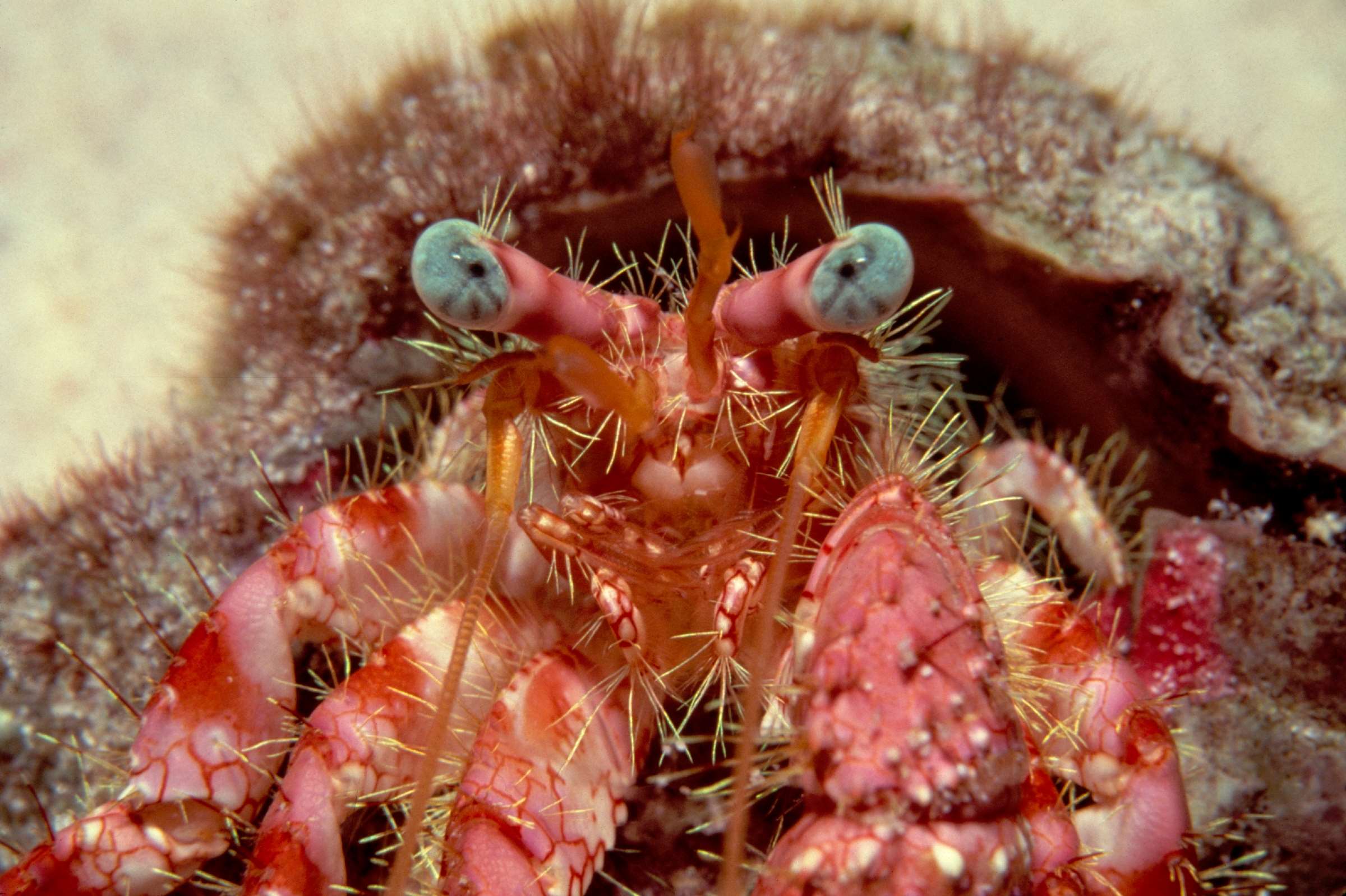Hermit crab
Pagurus spp.
On view at the Aquarium inKelp Forest,Rocky Shore,Splash Zone & Penguins
Meet the hermit crab
If you see a snail walking across the touch table in our Splash Zone exhibit, look closer — it's a hermit crab in a discarded snail shell! The hermit crab wears a shell to protect its soft abdomen, which is asymmetrical and curved to fit the spiral shape of its shell.
Animal type
InvertebratesHabitat
Rocky shoreSize
Up to .75 inches (19 mm)
Diet
Scavenges plant material and dead matter
Range
From Alaska to Baja, California, and from the Bering Strait to Northern Japan
Relatives
Sand crabs, ghost shrimp, porcelain crabs; Class: Malacostraca
Natural history
Like all crabs, the hermit crab is a decapod — it has five pairs of legs, including a pair of claws. The hermit crab uses its claws for defense and food shredding as well as eating. The second and third pairs of legs help the crab walk, and the last two pairs hold the hermit crab in its shell.


Conservation
The hermit crab is abundant in tide pools. If you go, it's important to follow tidepool etiquette — look, but don't disturb or collect, which is illegal on many shores. Because the number of empty shells in a tide pool ensures the survival of hermit crabs, please leave all empty shells where you find them. And take care of yourself — remember that rocks in the tide pool are slippery. Face the ocean — unexpected large waves can easily sweep you into the water.
Cool facts
- The hermit crab prefers certain shells. Pagurus samuelis, a common tide pool hermit crab, prefers the shell of the black turban snail.
- A hermit crab moves into larger shells as it grows — fighting with other hermit crabs for the shells if necessary — but it doesn’t harm healthy snails.
